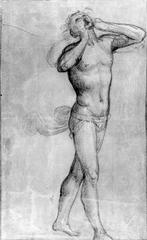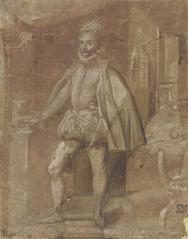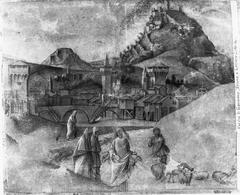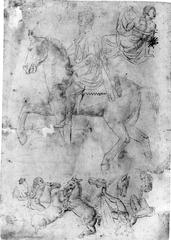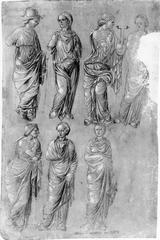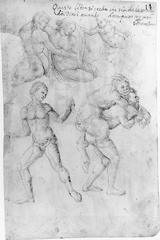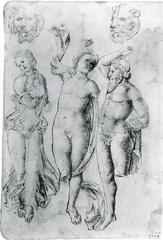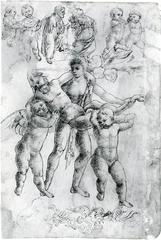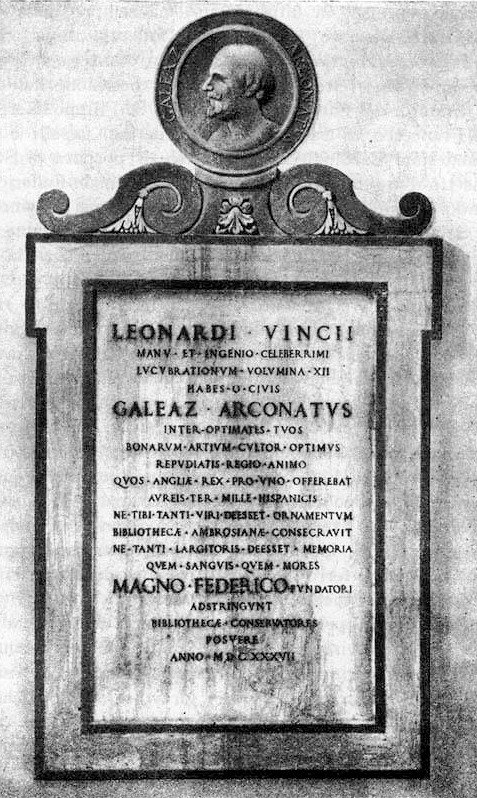
Complete Guide to Biblioteca Ambrosiana Visiting Hours, Tickets, and Milan Historical Sites
Date: 14/06/2025
Introduction
Located in the heart of Milan, the Biblioteca Ambrosiana stands as a remarkable testament to Renaissance humanism, cross-cultural scholarship, and artistic excellence. Founded in 1609 by Cardinal Federico Borromeo, it is one of Europe’s earliest public libraries and remains a dynamic center for education, intercultural dialogue, and preservation. With its vast collections of rare manuscripts and masterpieces by Leonardo da Vinci, Raphael, Caravaggio, and others, the Ambrosiana is a must-visit for scholars, art lovers, and anyone interested in Milan’s rich history. This guide provides essential information on Biblioteca Ambrosiana visiting hours, tickets, must-see highlights, accessibility, and practical tips for making the most of your visit to this iconic Milan historical site (Khaleej Times, Ambrosiana official site, Visit Italy).
Table of Contents
- Introduction
- Historical Overview and Significance
- Collections and Notable Highlights
- Visiting Biblioteca Ambrosiana: Hours and Ticket Information
- Visitor Experience and Practical Tips
- Nearby Milan Historical Sites and Suggested Itineraries
- Frequently Asked Questions (FAQ)
- Conclusion
- References and Further Reading
Historical Overview and Significance
Foundation and Vision
The Ambrosiana was established in 1609 by Cardinal Federico Borromeo, driven by a vision to create a universal library open to scholars and the general public alike. Named after Saint Ambrose, Milan’s patron saint, the library was conceived as a center for learning, cultural exchange, and intellectual advancement. Borromeo’s agents traveled across Europe and the Near East to acquire rare manuscripts and books, amassing a collection that quickly gained international renown (Khaleej Times, Sacred Destinations).
Growth and Diverse Collections
From its inception, the Ambrosiana was notable for its inclusivity, collecting works in Latin, Greek, Hebrew, Arabic, Syriac, and Ethiopic as well as significant Christian, Islamic, and Jewish texts. Early acquisitions included the libraries of the Benedictine monastery of Bobbio and scholar Vincenzo Pinelli, adding such treasures as the fifth-century “Ilias Picta.” This diverse, multilingual collection established the Ambrosiana as a hub for intercultural dialogue (European Museums, Wikipedia).
The Pinacoteca Ambrosiana and Artistic Legacy
Cardinal Borromeo also contributed his own art collection, founding the Pinacoteca Ambrosiana in 1618. The gallery became Milan’s oldest art museum, featuring works by Leonardo da Vinci, Caravaggio, Raphael, Botticelli, Titian, Brueghel, and others. This dual focus on literary and artistic heritage remains unique among European libraries (Seemilan).
Collections and Notable Highlights
Manuscripts and Rare Books
With over a million printed volumes and nearly 40,000 manuscripts, the Ambrosiana’s holdings span theology, philosophy, science, literature, and the arts. Among its most prized treasures are illuminated manuscripts, early printed books, and original works by Dante, Petrarch, and Galileo (Nomads Travel Guide).
The Codex Atlanticus by Leonardo da Vinci
The Codex Atlanticus is the largest collection of Leonardo da Vinci’s drawings and writings—over 1,100 pages covering engineering, anatomy, astronomy, and more. Only select sheets are displayed at a time in the historic Sala Federiciana, with regular rotations for preservation. The entire Codex is available for free online consultation (Visit Italy, YesMilano, European Traveler).
Artistic Masterpieces in the Pinacoteca
Highlights include Leonardo’s only panel painting in Milan, the “Portrait of a Musician,” Caravaggio’s “Basket of Fruit,” and Raphael’s cartoon for the “School of Athens.” Works by Botticelli, Titian, Brueghel, and Bramantino further enrich the collection (YesMilano, Nomads Travel Guide).
Unique Spaces
- Sala Federiciana: The grand reading room, where rare manuscripts and Codex Atlanticus pages are displayed (European Traveler).
- San Sepolcro Crypt: A medieval crypt beneath the Church of San Sepolcro, open to visitors with a combined ticket (Full Suitcase).
- Galbiati Wing and Courtyard: Elegant loggia and courtyard views, adding spiritual ambiance to the visit.
Visiting Biblioteca Ambrosiana: Hours and Ticket Information
Opening Hours
- Pinacoteca Ambrosiana & San Sepolcro Crypt:
Open daily (except Wednesdays) from 10:00 to 18:00, last entry at 17:30. - Reading Room:
Monday to Friday, 9:00–16:50; by reservation for research use (Ambrosiana Official Info).
Ticket Prices and Booking
- Standard Admission (Pinacoteca): ~€12.50
- San Sepolcro Crypt: €7.50
- Combined Ticket: €16.50 (Pinacoteca + Crypt)
- Reductions: School groups, under-5s in nursery school groups, students, and seniors receive discounts.
- Combined Passes: Available with other Milan attractions, including the Duomo and city passes (Tiqets).
- Booking: Advance online booking is highly recommended, especially for weekends or special exhibitions (Ambrosiana Official Info, Visit Italy).
Accessibility
Most public areas are wheelchair accessible, with ramps and elevators. For specific needs, contact the library in advance (Ambrosiana Official Info).
Visitor Experience and Practical Tips
Getting There
The Biblioteca Ambrosiana is centrally located at Piazza Pio XI, 2, easily reached via:
- Metro: Cordusio and Duomo stations (M1, M3 lines)
- Tram: Lines 12, 14, 16 (Orefici/Cantù); Lines 2, 3 (Duomo)
(Ambrosiana Official Info)
Atmosphere and Flow
Unlike many Milanese attractions, the Pinacoteca Ambrosiana tends to be calm and uncrowded, making for an intimate, contemplative visit (Full Suitcase). Staff are available to assist and maintain respectful behavior throughout the site.
Facilities and Policies
- Cloakroom: Large bags and backpacks must be checked.
- Photography: Generally allowed without flash or tripods in designated areas; always check current policies.
- Restrooms & Shop: Facilities and a small gift shop are available on site.
- Refreshments: No café inside, but many options nearby in central Milan.
- Language: Signage and guides are typically bilingual (Italian/English); guided tours may be available in multiple languages.
Tips for a Smooth Visit
- Book tickets online to guarantee entry and avoid queues.
- Visit in the morning for the quietest experience.
- Consider combination tickets for added value if planning to visit other Milan historical sites.
- Plan for accessibility if needed—some historic areas may have limitations.
Nearby Milan Historical Sites and Suggested Itineraries
The Ambrosiana’s central location makes it ideal for combining with other top attractions:
- Duomo di Milano: The iconic cathedral is just a few minutes’ walk away.
- Galleria Vittorio Emanuele II: Historic shopping arcade adjacent to the Duomo.
- Teatro alla Scala: World-famous opera house, also nearby.
- Pinacoteca di Brera: Another essential Milan art gallery (Full Suitcase).
Suggested Itinerary:
Start with a morning at the Biblioteca Ambrosiana, followed by lunch in the city center, and an afternoon exploring the Duomo and Galleria.
Frequently Asked Questions (FAQ)
Q: What are the Biblioteca Ambrosiana visiting hours?
A: Pinacoteca and Crypt: 10:00–18:00 (last entry 17:30), closed Wednesdays. Reading Room: Monday–Friday, 9:00–16:50, by reservation.
Q: How can I buy tickets?
A: Tickets are available online (Tiqets), at the ticket office, or as part of combination passes.
Q: Are guided tours available?
A: Yes, periodic tours are available; check the official website or inquire at the ticket office.
Q: Is the Biblioteca Ambrosiana wheelchair accessible?
A: Most public areas are accessible; contact the museum for specific needs.
Q: Can I visit the Codex Atlanticus?
A: Rotating selections are on display in the Sala Federiciana; the full Codex is accessible online.
Q: Can I use the Reading Room for research?
A: Scholars can access rare collections by advance reservation.
Q: Are combined tickets with other attractions available?
A: Yes, combined tickets and city passes including the Duomo and other sites are available.
Conclusion
The Biblioteca Ambrosiana is a jewel of Milanese heritage, offering a unique blend of art, history, and cross-cultural learning. Its accessible hours, varied ticket options, and rich collections—from Leonardo da Vinci’s Codex Atlanticus to masterpieces by Caravaggio—make it a must-visit for anyone seeking to immerse themselves in Milan’s cultural legacy. Plan ahead, book your tickets online, and consider combining your visit with nearby historical sites for a full Milan experience. Stay up to date on exhibitions and events by following the official website and digital platforms.
Explore more Milan attractions and get insider tips by browsing our related articles here. Don’t forget to download the Audiala app for seamless ticket bookings and real-time updates on Milan’s cultural hotspots. Follow us on social media for the latest news and exclusive offers!
References and Further Reading
- Biblioteca Ambrosiana: A Historic Milanese Treasure - Visiting Hours, Tickets, and Guide, 2025, Khaleej Times (https://www.khaleejtimes.com/lifestyle/wknd-travel-inside-the-ambrosiana-milans-historic-library)
- Visiting Biblioteca Ambrosiana: Hours, Tickets, and Milan’s Historical Treasure, 2025, Ambrosiana official site (https://ambrosiana.it/en/)
- Visiting the Biblioteca Ambrosiana: Hours, Tickets, and Must-See Milan Historical Sites, 2025, Nomads Travel Guide (https://www.nomads-travel-guide.com/places/pinacoteca-ambrosiana/)
- Biblioteca Ambrosiana Visiting Hours, Tickets & Visitor Guide to Milan’s Historic Library and Pinacoteca, 2025, Tiqets (https://www.tiqets.com/en/biblioteca-ambrosiana-tickets-l146776/)
- Biblioteca Ambrosiana, 2025, Visit Italy (https://www.visititaly.eu/tickets/pinacoteca-ambrosiana)
- Biblioteca Ambrosiana, 2025, YesMilano (https://www.yesmilano.it/en/see-and-do/venues/ambrosiana-gallery)
- Biblioteca Ambrosiana, 2025, Full Suitcase (https://fullsuitcase.com/milan-best-things-to-do/)

